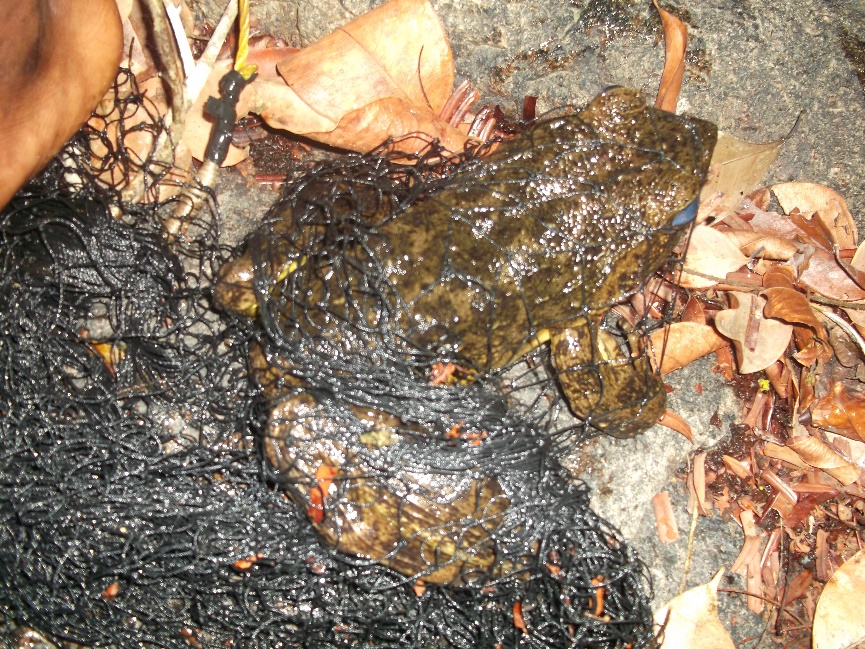The population of Goliath frogs in the wild, in Cameroon is decreasing due to accelerated habitat loss occasioned by deforestation, hunting, and over collecting from the wild for pet trade. The most is severe threat to this species is hunting for food, and new sophisticated traps, for catching this species are now being scrupulously used in the Nkongsamba area of Cameroon. These endangered frogs are also been adversely affected by the loss of forest habitat for agriculture, logging, and human settlements.
The Goliath frog is the largest frog in the world. This frog is found only in restricted areas in Cameroon and Equatorial Guinea. According to IUCN (International Union for Conservation of Nature), Goliath frog is an endangered species because of a 50% decline in population size in the last three generations. Presently, the Goliath frog is teetering at the brink of extinction
Mount Nlonako in Cameroon harbors 93 types of amphibian species, including the Goliath frog. The 93 species constitute 32 percent of the 236 amphibian species recorded in Cameroon. Biologically, Mount Nlonako has been termed as a veritable hotspot of African amphibian diversity. The area is characterized by high amphibian, mammalian and reptilian species richness and therefore ranked amongst the top 10 mountain ecosystem biodiversity hotspots in Africa. Due to lack of employment and livelihood opportunities, locals in and around the Mount Nlonako area are often engaged in hunting and poaching of wildlife.

Local holds goliath frog admirably caught with a snare
On an average, the local hunters hunt twice a week and harvest an average of 10-15 frogs a week, resulting in an estimated harvest of 19,440 frogs every peak season, mostly during the dry season, revealed a study conducted in Mount Nlonako by the Environment and Rural Development Foundation (ERuDeF) in 2016.

Goliath frog finds itself helplessly in a hunting net
“in one night, I used to catch 8 to 12 Goliath frogs,” a frog hunter from Magamba village, Mount Nlonako, Mungo Division revealed. “But now, catching even 2 to 5 of them in a night is difficult. They are not plentily available now in the area” he added.
Even their tadpoles are harvested by the locals for consumption. “We have been eating goliaths for years. It is good for children and pregnant women. But you should eat it when it is fresh,” he adds.
Some local journalists also reported that many of these live frogs are actually trafficked to neighboring countries like Nigeria, Congo and Gabon.
According to Tim Killian, ERuDeF’s Focal Point Manager for the Nlonako Muanenguba Mountains, working closely with local rangers, “we aim to learn more than ever about the Goliath frogs and the threats they face. With the knowledge gained, we will be able to devise and implement urgent measures for protecting the remaining Goliath frogs. It’s the only way we are going to save them from extinction. It will be a major step towards saving these endangered frogs from extinction. But we need your help to pay for it. ERuDeF’s presence to rescue amphibians and curb the illegal wildlife and pet trade is critical. Every Goliath frog rescued is important to the survival and continuation of the species. The only real hope for these amphibians is the preservation of their rainforest home. Those that cannot survive in the wild are given a life-long home. However, their offspring are candidates for future reintroduction into the wild”.


